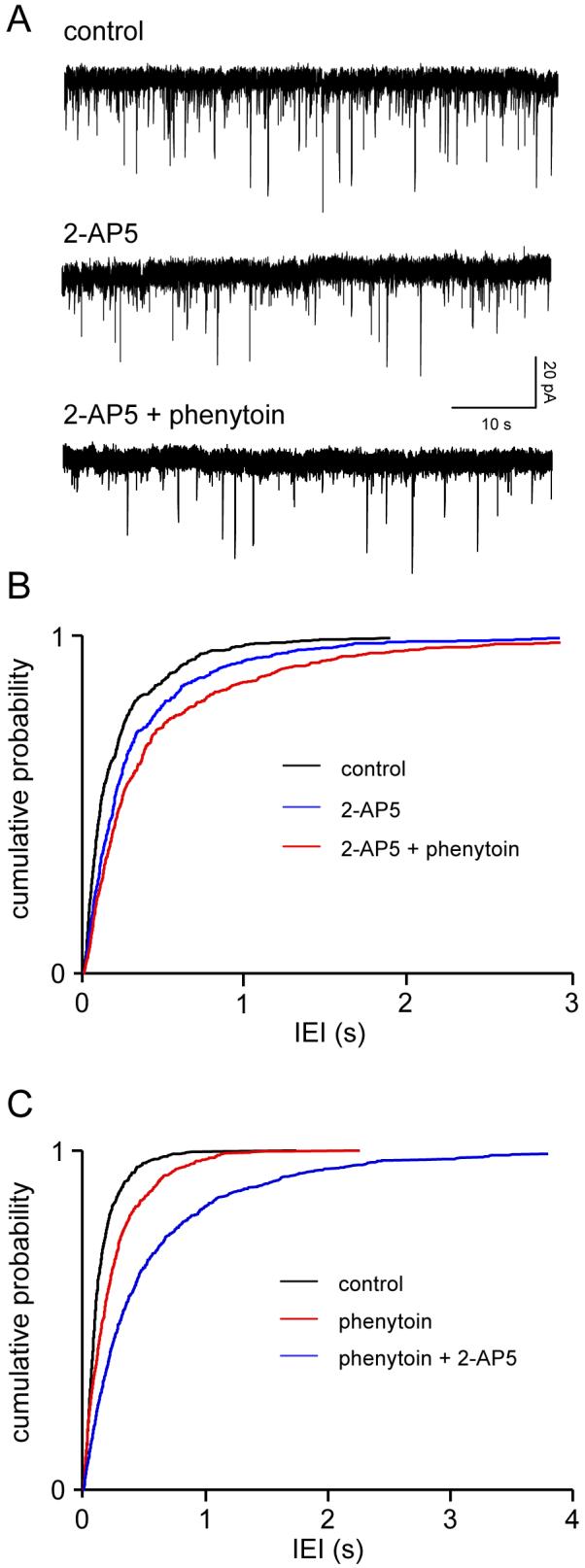Figure 2.

Phenytoin does not act via presynaptic NMDAr. A. Voltage clamp recordings from a single layer V neurone. The downward defections are spontaneous sEPSCs mediated via glutamate acting at postsynaptic AMPAr. Application of 2-AP5 (50 μM) reduced the frequency of sEPSCs, but did not occlude the effect of the subsequent addition of phenytoin (50 μM), which caused a substantial further reduction. B. Pooled data from 3 neurones (200 events, from each neurone in each condition). The cumulative probability curve in the presence of 2-AP5 is significantly (P<0.01) shifted to the left towards longer intervals (lower frequency). The addition of phenytoin caused a further significant shift (KS, P<0.001). C. In the reverse experiment, phenytoin significantly increased IEI (KS, P<0.001), and 2-AP5 caused a further significant shift to the left (KS, P<0.001). Pooled data from 4 neurones.
